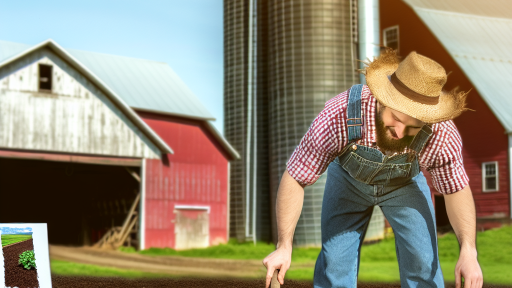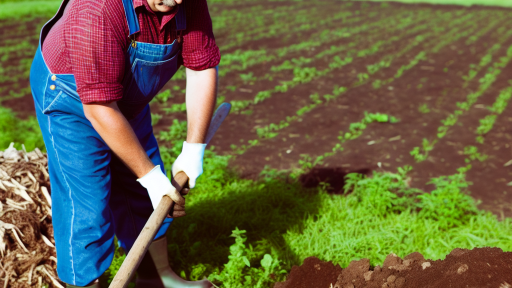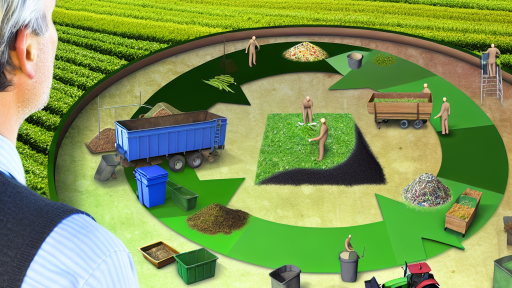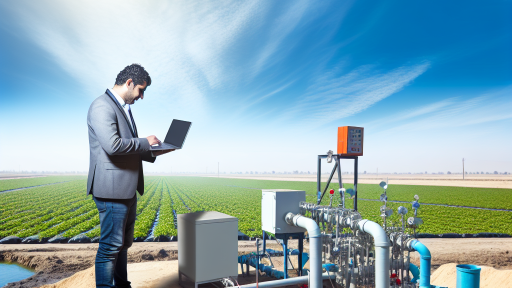Understanding the Basics of Organic Farming Infrastructure
Essential Components of Infrastructure
Organic farming infrastructure includes several essential components.
Each part supports sustainable practices and effective operation.
These components enhance productivity and ensure environmental protection.
Types of Organic Farming Infrastructure
There are various types of infrastructure needed for organic farming.
Farm buildings serve as base facilities for equipment and storage.
Crop rotation beds create diverse planting opportunities for soil health.
Fencing protects crops from animals and helps manage land use.
Water management systems ensure efficient irrigation and drainage.
Importance of Eco-Friendly Practices
Eco-friendly practices contribute significantly to organic farming success.
Renewable energy options reduce dependency on fossil fuels.
Composting facilities recycle organic waste into valuable soil amendments.
Natural pest control methods minimize harmful chemical usage.
Designing a Sustainable Layout
A well-thought-out layout enhances farm efficiency.
Consider the location of buildings, fields, and water sources.
This strategic design maximizes accessibility and minimizes pollution.
Transform Your Agribusiness
Unlock your farm's potential with expert advice tailored to your needs. Get actionable steps that drive real results.
Get StartedFurthermore, it promotes wildlife habitats within the farm area.
Financial Planning and Investment
Investment in quality infrastructure pays off in the long run.
Effective financial planning ensures adequate resource allocation.
Start with a budget that accommodates initial setup costs.
Seek grants and subsidies available for organic farming projects.
Also, consider partnerships with local agriculture organizations.
Essential Components of Organic Farming Facilities
Site Selection
Choose a location that receives ample sunlight throughout the day.
The site should have access to clean water sources for irrigation.
Ensure the land has proper drainage to prevent waterlogging.
Evaluate soil quality to support healthy plant growth.
Infrastructure Design
Design facilities with natural ventilation to maintain air quality.
Incorporate solar panels to harness renewable energy.
Utilize materials that are sustainable and eco-friendly.
Ensure the layout promotes efficient workflow on the farm.
Water Management
Implement rainwater harvesting systems to conserve water.
Utilize drip irrigation to minimize water wastage.
Regularly monitor water quality to ensure it meets organic standards.
Introduce water-efficient technologies to enhance irrigation practices.
Soil Management
Adopt crop rotation to maintain soil fertility and structure.
Use organic compost to enrich soil and improve microbial activity.
Implement cover cropping to prevent soil erosion.
Regularly test soil to assess nutrient levels and pH balance.
Pest and Disease Control
Employ integrated pest management techniques to control pests naturally.
Encourage beneficial insects to maintain ecological balance.
Showcase Your Farming Business
Publish your professional farming services profile on our blog for a one-time fee of $200 and reach a dedicated audience of farmers and agribusiness owners.
Publish Your ProfileRotate crops to disrupt pest life cycles and reduce infestations.
Utilize organic-approved pesticides when necessary, ensuring compliance.
Storage and Processing Facilities
Build storage areas that maintain optimal conditions for organic produce.
Ensure facilities are accessible for efficient transportation of goods.
Incorporate eco-friendly packaging solutions for product storage.
Facilitate on-site processing to add value to harvested crops.
Water Management Systems for Organic Farming
Importance of Water Management
Effective water management is crucial for organic farming.
It significantly impacts crop yield and soil health.
Proper systems help conserve water resources.
Additionally, they enhance resilience against droughts.
Types of Water Management Systems
Several water management systems benefit organic farmers.
- Rainwater harvesting techniques capture seasonal rains.
- Irrigation systems deliver water efficiently to crops.
- Drip irrigation minimizes water wastage and soil erosion.
Farmers can choose systems based on their specific needs.
Implementing Rainwater Harvesting
Rainwater harvesting collects and stores rain for future use.
This method reduces reliance on groundwater resources.
Farmers can install gutters and tanks for effective collection.
They should consider local rainfall patterns for optimal designs.
Utilizing Efficient Irrigation Techniques
Efficient irrigation is vital in maintaining crop health.
Drip irrigation systems provide precise water delivery to plants.
These systems reduce evaporation and runoff significantly.
Farmers should monitor soil moisture levels regularly.
Importance of Soil Moisture Conservation
Soil moisture conservation is essential for crop vitality.
Cover cropping and mulching are effective techniques.
They help maintain soil structure and reduce evaporation.
Organic matter also plays a crucial role in moisture retention.
Monitoring and Adjusting Water Use
Regular monitoring helps determine water needs effectively.
Farmers should utilize soil moisture sensors for accurate readings.
Adjusting water use based on readings promotes sustainable practices.
This approach optimizes water usage and improves yields.
Discover More: Enhancing Soil Health through Integrated Pest Management
Soil Health and Composting Techniques for Sustainability
Importance of Soil Health
Soil health is crucial for sustainable farming practices.
Healthy soil supports plant growth and boosts crop yields.
It also promotes biodiversity and aids in carbon sequestration.
Understanding Soil Composition
Soil consists of minerals, organic matter, water, and air.
Each component plays a pivotal role in soil health.
Regular testing can help assess soil composition accurately.
Composting for Soil Enrichment
Composting transforms organic waste into nutrient-rich soil amendment.
This process enhances soil structure and fertility.
It also reduces waste sent to landfills, promoting sustainability.
Basic Composting Techniques
Start by choosing a composting method that suits your needs.
Keep a balance of green materials and brown materials.
Showcase Your Farming Business
Publish your professional farming services profile on our blog for a one-time fee of $200 and reach a dedicated audience of farmers and agribusiness owners.
Publish Your ProfileTurn the compost regularly to aerate it properly.
Common Composting Ingredients
Add kitchen scraps like fruit peels and vegetable waste to your compost.
Include lawn clippings, leaves, and shredded paper for balance.
Avoid adding meat, dairy, and oily products to prevent odor.
Practices for Enhancing Soil Health
Cover cropping improves soil structure and prevents erosion.
Crop rotation disrupts pest cycles and maintains nutrient levels.
Reduced tillage preserves soil integrity and microbial life.
Benefits of Cover Cropping
Cover crops prevent soil erosion during off-seasons.
They also enhance organic matter returns to the soil.
Additionally, cover crops can suppress weeds naturally.
Implementing Crop Rotation
Rotate crops to avoid nutrient depletion in the soil.
This method reduces the need for synthetic fertilizers.
Furthermore, diverse crops support various beneficial organisms.
Monitoring and Improving Soil Health
Regular soil testing is essential to monitor health metrics.
Adjust your practices based on soil health data collected.
Continue educating yourself on new sustainable practices.
Learn More: IPM Best Practices for Sustainable Agriculture
Crop Rotation and Planning for Organic Crop Production
Importance of Crop Rotation
Crop rotation enhances soil health over time.
It minimizes pest buildup by disrupting their life cycles.
This practice improves nutrient availability in the soil.
Additionally, it helps control weeds naturally.
Strategies for Effective Crop Rotation
Select diverse crops that have different nutrient needs.
Include legumes to fix nitrogen and enrich the soil.
Plan rotations based on crop families to avoid disease.
Furthermore, consider planting cover crops during off-seasons.
Integrating Crop Planning
Effective crop planning is vital for maximizing yields.
Analyze soil testing results to guide planting decisions.
Develop a planting schedule to optimize growth periods.
Incorporate seasonal trends to improve crop resilience.
Monitoring and Adjustment
Regularly monitor crop health and soil conditions.
Be prepared to adjust your plan based on observations.
Document outcomes to refine future crop rotation strategies.
Maintaining flexibility allows for adaptation to changing conditions.
Benefits of Sustainable Practices
Sustainable crop rotation enhances long-term productivity.
It also contributes to environmental health and biodiversity.
By practicing effective crop rotation, farmers increase resilience.
This approach ultimately supports a sustainable farming ecosystem.
Learn More: Composting Basics For Better Soil Health
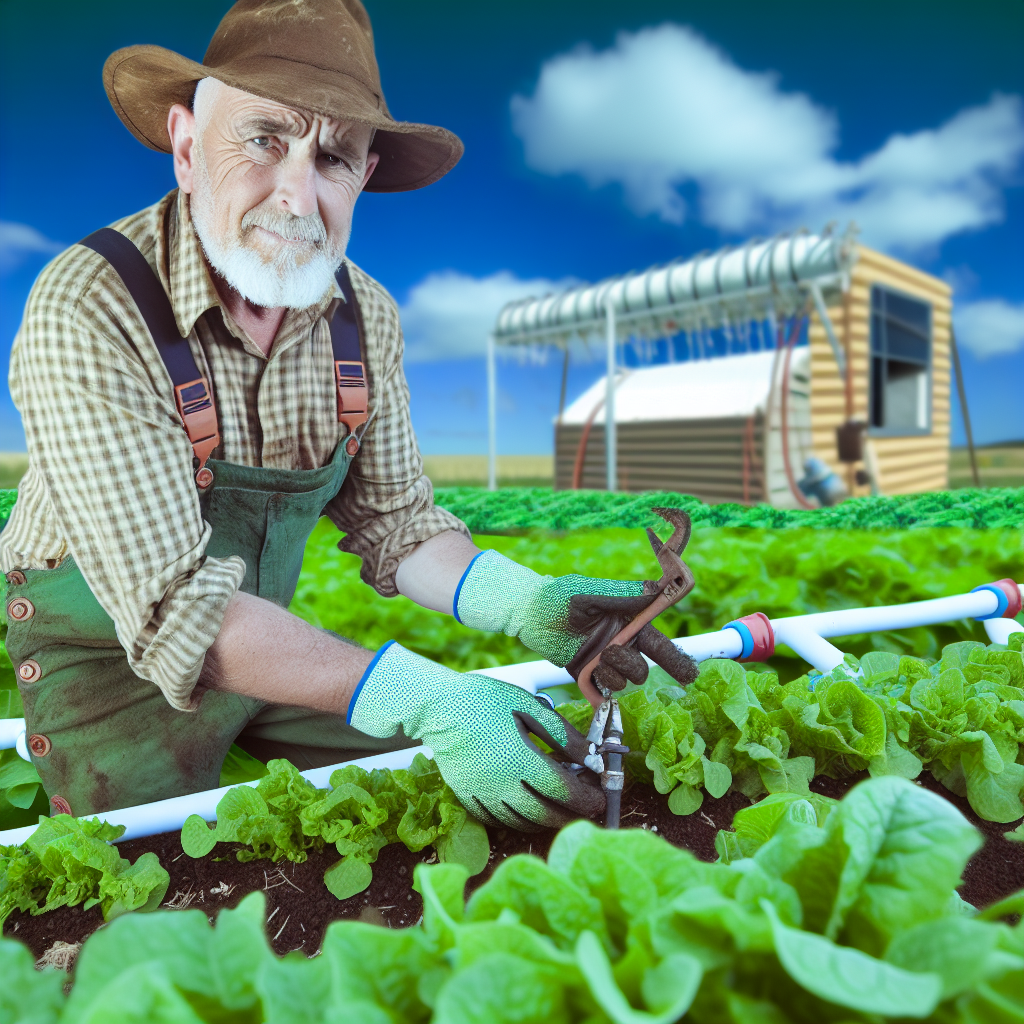
Integrating Livestock into Organic Farming Infrastructure
Benefits of Livestock Integration
Using livestock in organic farming provides multiple benefits.
It enhances soil fertility through natural manure production.
Showcase Your Farming Business
Publish your professional farming services profile on our blog for a one-time fee of $200 and reach a dedicated audience of farmers and agribusiness owners.
Publish Your ProfileThis practice promotes biodiversity on the farm.
Additionally, livestock helps control pests and weeds.
Moreover, it contributes to the overall ecosystem health.
Choosing the Right Livestock
Selecting the appropriate livestock is crucial for success.
Consider your farm’s specific needs and resources.
For instance, chickens can effectively manage pests in vegetable gardens.
On the other hand, goats are excellent for weed control.
Dairy cows can provide both milk and manure for fertilization.
Creating a Sustainable Infrastructure
A robust infrastructure is vital for integrating livestock effectively.
Design pastures that allow for natural grazing patterns.
Implement rotational grazing to prevent overgrazing.
Ensure ample shelter for livestock to protect them from harsh weather.
Additionally, provide access to fresh water at all times.
Managing Nutrient Cycling
Nutrient cycling is essential for sustainable farming.
Utilize livestock waste as a natural fertilizer.
Compost manure to enhance soil quality and health.
Consider planting cover crops to enrich soil between livestock cycles.
Furthermore, practice integrated pest management by allowing livestock to graze in certain areas.
Implementing Health and Welfare Practices
Prioritize the health and welfare of your livestock.
Provide regular veterinary care to prevent illnesses.
Ensure that animals have a balanced diet to thrive.
Regularly assess the living conditions for stress factors.
Ultimately, healthy livestock contribute to sustainable farming success.
Delve into the Subject: Implementing Agroforestry for Water Efficiency
Sustainable Pest Management Practices in Organic Settings
Understanding Pest Management
Pest management is crucial for organic farming success.
Farmers must adopt sustainable practices to protect crops.
These practices should minimize any negative environmental impact.
Integrated Pest Management Strategies
Integrated Pest Management (IPM) combines multiple strategies.
Farmers can use cultural, biological, and mechanical methods effectively.
This approach reduces reliance on chemicals significantly.
Moreover, it promotes natural pest control methods.
Cultural Practices
Crop rotation encourages a balanced ecosystem.
This method interrupts pest life cycles.
Additionally, selecting resistant plant varieties can reduce pest infestations.
Proper timing of planting also helps in pest management.
Biological Control
Utilizing natural predators helps manage pest populations.
For example, ladybugs control aphid populations effectively.
Creating habitats for beneficial insects can enhance their presence.
Mechanical Techniques
Farmers can use traps as a preventive measure against pests.
Row covers effectively protect young plants from insect damage.
Showcase Your Farming Business
Publish your professional farming services profile on our blog for a one-time fee of $200 and reach a dedicated audience of farmers and agribusiness owners.
Publish Your ProfileMoreover, handpicking pests remains an effective organic solution.
Monitoring and Assessment
Regular monitoring is essential for effective pest management.
Farmers should keep a close eye on pest populations.
This practice enables timely interventions before infestations occur.
Education and Resources
Farmers must stay informed about sustainable pest management techniques.
Participating in workshops and farmer groups fosters knowledge sharing.
Accessing community resources strengthens their pest management strategies.
Renewable Energy Solutions for Organic Farming Operations
Importance of Renewable Energy
Renewable energy plays a crucial role in sustainable farming.
It reduces reliance on fossil fuels and lowers greenhouse gas emissions.
Additionally, it enhances energy independence for farming operations.
Types of Renewable Energy Sources
Solar Energy
Solar panels are an excellent option for organic farms.
They convert sunlight into electricity, powering various farm equipment.
Farmers can use solar energy for irrigation and greenhouse heating.
Wind Energy
Wind turbines harness wind power effectively.
They can provide a significant energy source for larger farms.
Farmers can install turbines strategically to maximize energy production.
Biomass Energy
Biomass energy utilizes organic waste from farming.
This energy source converts waste into electricity through combustion.
It promotes waste management and reduces landfill use.
Implementing Renewable Energy Solutions
Evaluate your farm’s energy needs before choosing a renewable source.
Conduct an energy audit to identify areas for improvement.
Collaborate with local energy experts for installation and maintenance.
Financial Incentives and Support
Many governments offer grants for renewable energy projects.
Leveraging these funds can reduce initial investment costs.
Check for local incentives that support sustainable farming practices.
Future of Renewable Energy in Organic Farming
Adopting renewable energy will secure a sustainable future for farming.
As technology advances, energy efficiency will continue to improve.
This shift will enhance farm profitability and environmental health.
Additional Resources
Sustainable Agricultural Productivity Growth: What, Why and How …
What is the Farm Bill? – National Sustainable Agriculture Coalition

